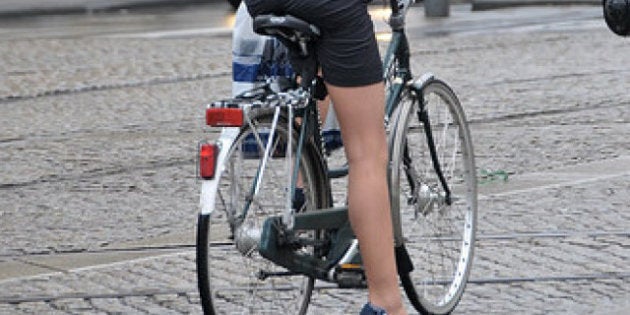
Most arguments against bike lanes are absurd. Consider this: We have wide roads everywhere to accommodate cars, most of which carry only one person. On either side of many of those roads, we have pedestrian sidewalks. In most large urban areas, we also have bus lanes and transit systems such as subways and rapid transit. When cyclists ride on roads, drivers often get annoyed. If they ride on sidewalks, pedestrians rightly get angry.
Human-powered transportation will only get more popular as gas prices rise and as the negative consequences of our car-centric culture increase. We should be doing everything we can to discourage single-occupant automobile use while encouraging public transit and pedestrian and pedal-powered movement.
In many North American cities, including Vancouver, where I live, commuters scream bloody murder if it takes them an extra two minutes to get to their destination by car. The reality is that drivers are slowed more by increases in car traffic than by bike lanes. According to the Globe and Mail, a study by Stantec Consulting Ltd. found that traffic delays because of bike lanes in Vancouver were mostly imagined. Drivers who were surveyed thought it took them five minutes longer to travel along a street with a new bike lane. But the study showed that it actually took from five seconds less to just a minute and 37 seconds more.
There's also the argument that slowing car traffic down is a good thing. In some European cities, planners are finding that making life more difficult for drivers while providing incentives for people to take transit, walk, or cycle creates numerous benefits, from reducing pollution and smog-related health problems to cutting greenhouse gas emissions and making cities safer and friendlier.
In Zurich, Switzerland, planners have added traffic lights, including some that transit operators can change in their favour, increased the time of red lights and decreased the greens, removed pedestrian underpasses, slowed speed limits, reduced parking, and banned cars from many streets. "Our goal is to reconquer public space for pedestrians, not to make it easy for drivers," chief traffic planner Andy Fellmann told the New York Times. He also noted that a person in a car takes up 115 cubic metres of urban space in Zurich while a pedestrian takes three.
Where streets were closed to cars in Zurich, store owners worried about losing business, but the opposite happened -- pedestrian traffic increased 30 to 40 per cent, bringing more people into stores and businesses. In Vancouver, the Stantec study found that businesses along new downtown bike routes initially experienced minor decreases in sales, but that numerous strategies were available to overcome the declines. In the long run, most cities that have improved cycling and pedestrian infrastructure have seen benefits for area businesses.
Building bike lanes also creates jobs and other economic spin-offs, according to a study from the Political Economy Research Institute in Amherst, Massachusetts, titled "Pedestrian and Bicycle Infrastructure: A National Study of Employment Impacts." Researchers found that "bicycling infrastructure creates the most jobs for a given level of spending." For every $1 million spent, cycling projects created an average of 11.4 jobs in the state where the project was located, pedestrian-only projects created about 10 jobs, and multi-use trails created about 9.6 jobs. Infrastructure combining road construction with pedestrian and bicycle facilities created slightly fewer jobs for the same amount of spending, and road-only projects created the least, with a total of 7.8 jobs per $1 million.
One of the main reasons is that more of the money for road-building goes to materials and equipment whereas with bicycle and pedestrian infrastructure more goes to wages and salaries.
It's important to note that European cities have matched disincentives to drive with improved public transit. After all, not everyone can get to their destination by walking or cycling. But with fewer cars and reduced gridlock, those who must use automobiles -- including service and emergency-response vehicles and taxis -- have an easier time getting around.
Fortunately, the backlash against cycling infrastructure improvements appears to be subsiding. As oil becomes scarce and pollution and climate change increase, people are finally realizing that transporting a 90-kilogram person in two tonnes of metal just isn't sustainable, especially in urban areas.
Dr. David Suzuki is a scientist, broadcaster, author, and co-founder of the David Suzuki Foundation. Written with contributions from David Suzuki Foundation editorial and communications specialist Ian Hanington.
Learn more at www.davidsuzuki.org.